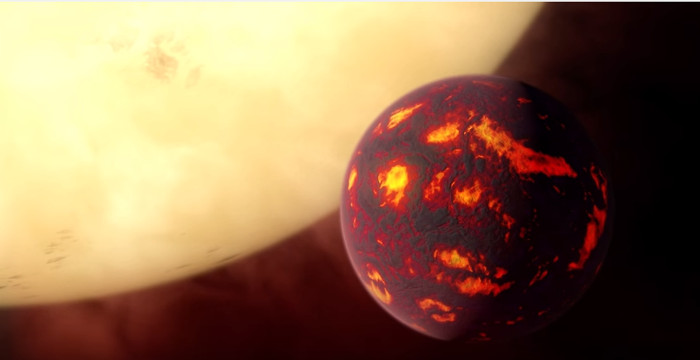Atmosphere on diamond planet
Using new techniques based on data obtained from the Hubble telescope, a group of European scientists investigated the substances that exist in the atmosphere surrounding the planet 55 Cancri e.
According to Time, the planet has been dubbed the diamond planet because, based on its predictive model of mass and radius, scientists believe it is a carbon-rich planet.
Based on data from the Hubble telescope, researchers at University College London (UCL) found evidence of the presence of hydrogen and helium in the atmosphere of 55 Cancri e, but no water.
"The results are very interesting, because this is the first time we can detect traces of the spectrum showing the existence of gases in the atmosphere of a super-Earth," said Angelos Tsiaras, a postdoctoral researcher. PhD at UCL, who developed analytical techniques along with colleagues Dr. Ingo Waldmann and Marco Rocchetto at the Department of Astrophysics, said.
Super Earth is a common name for planets with galaxies with Earth but much larger than Earth, but is still smaller than giant gas planets in the solar system.

55 Cancri is a super-Earth because it is a stone planet with twice the size and 8 times the mass of the Earth.
55 Cancri is a super-Earth because it is a stone planet with twice the size and 8 times the mass of the Earth. It is one of five planets orbiting a sun-like star in the constellation Cancer, about 40 light-years from Earth. However, this planet does not rotate around its axis, so there is no day and night. Its year only lasts 18 hours of Earth, and its surface temperature is about 2,000 degrees Celsius.
"Now, we have a clue that shows how the planet looks, develops and develops, which makes sense for understanding 55 Cancri e and other super-Earths," Professor Giovanna Tinetti of UCL said.
The scientists also found traces of hydrogen cyanide , the element that makes up the carbon-rich atmosphere.
"Such a large amount of hydrogen cyanide shows that the atmosphere has a high rate of carbon and oxygen," said Dr. Olivia Venot, KU Leuven University, Belgium, who developed the model of atmospheric constituents of 55 Cancri e, said.
"In the next few years, perhaps the new generation of infrared telescopes will confirm the presence of hydrogen cyanide and other molecules, and reinforce the theory that the planet is rich in carbon," Professor Jonathan Tennyson of UCL said.
"Even so, this hydrogen cyanide is also known to be highly toxic. It is not a planet where I want to live," said Tennyson.
- Admire the most expensive diamonds on the planet
- Admire the golden diamond 'terrible' rarely seen
- Life can be born first on a diamond planet
- 1000 tons of diamonds poured down on Saturn and Jupiter every year
- Diamond blocks are bigger than Earth
- The world's largest rough diamond has a master
- Makemake planet has no atmosphere as expected
- Video: The rain of diamonds on Saturn is amazing
- Discover the biggest diamond for over 100 years
- Things to know when buying diamond jewelry
- The planet has a gale of 8,700km / h and an atmosphere of 3,000 degrees Celsius
- Discovered a huge 1,758 carat rough diamond in Botswana
 Van Allen's belt and evidence that the Apollo 11 mission to the Moon was myth
Van Allen's belt and evidence that the Apollo 11 mission to the Moon was myth The levels of civilization in the universe (Kardashev scale)
The levels of civilization in the universe (Kardashev scale) Today Mars, the sun and the Earth are aligned
Today Mars, the sun and the Earth are aligned The Amazon owner announced a secret plan to build a space base for thousands of people
The Amazon owner announced a secret plan to build a space base for thousands of people What would happen if you dug a hole through the Earth and jumped in?
What would happen if you dug a hole through the Earth and jumped in?  Chilling discovery of cosmic object that almost brought the Earth to 'apocalypse'
Chilling discovery of cosmic object that almost brought the Earth to 'apocalypse'  The Sun goes into hibernation, will the Earth usher in a new ice age?
The Sun goes into hibernation, will the Earth usher in a new ice age?  Discovery of space object powerful enough to tear apart the Earth
Discovery of space object powerful enough to tear apart the Earth  NASA to test 'pneumatic brakes' for Mars lander
NASA to test 'pneumatic brakes' for Mars lander  Breakthrough discovery of planet with more water than Earth
Breakthrough discovery of planet with more water than Earth 